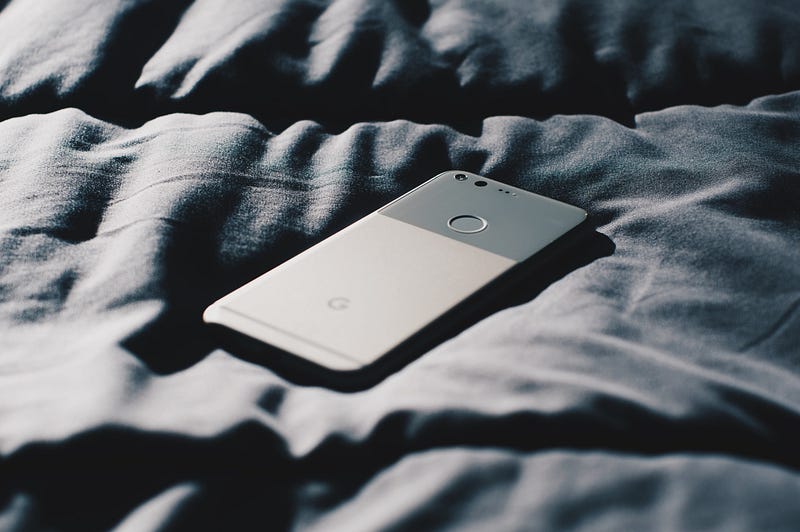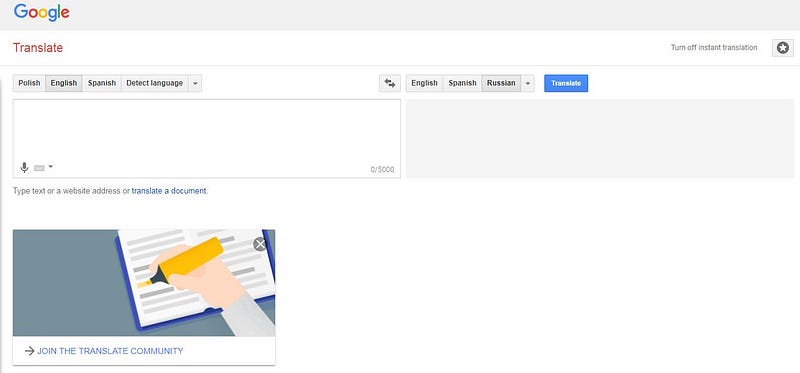I did it again.
I promised myself that I would make a return to social media after a 2-year hiatus if I could manage to steer clear of any drama. “It will be fine,” I told myself. “Just engage in twitter chats with like-minded educators and your feed will be wholesome and pure.” Well. It only took about a month before I accidentally got involved in a debate about cell phones in the classroom. I was told that I have “the brain of a child” and that’s why I can’t understand that phones are bad. Hmm.
Let me start by saying that I’m not the biggest user of technology. I don’t have internet at home. Seriously. I don’t have a TV and I don’t subscribe to any streaming services. I write everything on paper. I don’t have a laptop. No tablets. I do have an iPhone, though, and I don’t sleep at night until I’ve sent goodnight streaks on Snapchat (surprise) and read the latest news. I also tend to narrate my blog posts so that I don’t have to type them — like this one, which I’m writing at 2:18 in the morning. Other than News and Snapchat, there is really only one app that I use regularly — Google Translate. And this is what started the debate.
My educational background involves teaching ESL to high school seniors, most of whom were 17–21 years old, SIFE (students with interrupted formal education), working full time, and under-credited. I have no shame in saying that I allowed cell phones in my classroom. Not only did I allow them, but I encouraged students to use them responsibly. I did have a cell phone policy and I did enforce it, but the policy never involved making technology invisible.
 Photo by Mark Solarski on Unsplash
Photo by Mark Solarski on Unsplash
Sounds like a classroom management nightmare, doesn’t it? Well, I have a surprise for you: it wasn’t.
During my first few years of teaching, we did not have laptops in the classroom. We had one desktop computer, and it was mine. It was connected to the SmartBoard and I used it throughout my lessons. We also did not have dictionaries for all of the languages that the students spoke. It wasn’t a budgetary issue. It was an availability issue. There were only a few approved vendors in the district, and most of them stocked 1 or 2 dictionaries in the most common languages — and MAYBE 1 small glossary in lower incidence languages.
If you have never taught ESL, you might be surprised to discover that 30+ languages can be spoken in one classroom, and that glossaries might never have been published in some of those languages. For example, until a few months ago, there was not a single published English <> Uzbek glossary written in the Latin alphabet — not in the US, at least. (The first one was published just recently, but is not sold at any of the approved vendors in my district.) There are one or two in the Cyrillic alphabet, but Uzbek has not been written in the Cyrillic alphabet in years, and most of my students cannot read it. They used to purchase glossaries in bulk when they went back to Uzbekistan to help stock our classroom. And good luck finding a Tajik or Fulani glossary. Not a phrasebook — a glossary. One with more than a few hundred basic words.
Then we have some more common languages, like Urdu and Haitian Creole. Good luck finding a glossary with all the words kids encounter in the readings we assign. They spend 2–3 minutes looking for a word only to discover that it’s not in the little glossaries, so they line up by the desktop computer to take turns looking it up on Google Translate. Or I have to look it up on the SmartBoard 20+ times. A single word just derailed my lesson. I could have planned ahead for this single word, but could I have planned ahead for dozens of words?
When students arrive in this country at age 18 and have a limited amount of time to learn a new alphabet, a new language, and pass all of their exams before they age out, time really is of the essence. The bottom line is that Google Translate has proven to be an effective tool in the absence of well-written paper glossaries. And guess what? It’s a lot easier to use it on a phone because it’s not easy or convenient to type in a different alphabet on a desktop or laptop computer.
Maybe this will sound harsh, and perhaps it is more applicable to the upper grades, but I don’t have time for students to look up a dozen words in paper glossaries in the middle of my lesson, especially when they are looking up words that appear in the instructions — before they have even gotten to the task itself. I have 10 months to help these kids learn English from scratch. I usually have to start with the alphabet, so telling me to write instructions that are easier to read won’t help me during the first few weeks. Even though using a glossary is an important skill, it is a waste of instructional time to spend 15 minutes looking up words when we can accomplish the same thing in two minutes with Google Translate.

(Just in case: I spend ample time teaching vocabulary, but I am referring to words that appear in instructions, or words that are not the target vocabulary in the lesson. Google Translate is not there to teach the target vocabulary, but to help me out with the non-target vocabulary.)
Now… I get it. Phones are distracting.
But the prevailing argument seems to be that adults are responsible enough to ignore the temptation of technology, while students are not.
I take issue with this for a few (admittedly anecdotal) reasons.
I see adults on social media or texting during PD and staff meetings all the time.
In grad school, I saw adults on Facebook and/or writing lesson plans during class every single night.
I see adults texting and driving all the time.
As educators, we are in a unique position in that we can teach students how to use technology responsibly.
Phones are not going away. These “kids” with phones are going to turn into adults with phones, and if we ban phones from the classroom, we are missing an important opportunity to teach them when and how to use technology appropriately. If we don’t teach them, who will?
Now, I am not saying that because adults sometimes misuse their phones, children should be allowed to do the same. No. I am saying that we should not make sweeping generalizations about how old someone has to be to know how to use their phone at the right times and for the right reasons.
Another prevailing argument is that kids only use their phones for social media.
My experiences, at least, suggest that this is not true. But anecdotal experiences are not enough to support this argument, so I decided to do a little field research. Stay tuned for a future post with quantitative data that I collected from several schools re: how kids in different age groups really use their phones.

In the meantime, I just want to point out that almost anything you can do on a cell phone can be done on the school’s iPads or laptops. Posting to social media, using a proxy to access restricted websites (like the one in the image below), googling random things about puppies, drawing pictures, playing games — it doesn’t have to be a personal device to be a potential distraction. Kids are smart — I once had a student tell me not to worry about YouTube being blocked on the SmartBoard and telling me to “look the other way for a minute” so she could unblock it and show the class her final project, which was too large to email to herself for playback.
 Source: Custom PC Review
Source: Custom PC Review
And perhaps it’s even harder to manage with computers, as we have to stand behind the student to see what they are doing. For me, taking kids to the computer lab (where I couldn’t see their screens without walking up and down the aisles for 45 minutes straight) was always worse than staying in the classroom and using our personal devices when we needed to.
Nobody is saying that kids should be texting, going on Instagram, or calling people during class. Nobody is saying that your cell phone policy should be a free-for-all. But here are some important things to consider:
If your lessons are accessible, captivating, and enjoyable, kids will probably not pull out their phones and start watching YouTube videos, just like you would not engage in off-task behavior if you were at the best workshop you had ever attended. Engaging in off-task behavior is not something that only kids do. Before phones, kids were doodling or passing notes, and adults were making 32 trips to the coffee pot during the workday to socialize with their coworkers. This is not a cell phone problem — this is a classroom management and student engagement problem.
You are the teacher. You make the rules. You establish the cell phone policy. You enforce the cell phone policy. In the absence of a building- or district-wide policy, you decide who uses phones, when, and for which purposes.
Phones do more than make calls and receive messages — that’s why they’re so valuable. Can you teach without them? Of course! Can you tell students that everything will be done the traditional way? Sure! That’s your right as an educator. Do what works best for you and your students. But you might be missing out on an important learning opportunity.
On a related note, let’s talk about phones and cyber bullying.
I didn’t put a lot of thought into this until I watched both seasons of 13 Reasons Why and literally fainted during both season finales, even though I had read the spoilers and knew exactly what to expect. This show affected me on such a personal level that I don’t even know if I could put my horror into words. Part of my horror, predictably, comes from the graphic depictions of suicide and sexual assault, but the other part comes from the lack of response from many people in the educational community. I desperately sought to discuss this with colleagues and was met with a dismal response. Nobody wanted to talk about it. The lack of response, to me, indicates that either (a) teachers haven’t watched it or (b) teachers don’t think these things really happen.
I’m bringing this up because some people have argued that banning phones does something to prevent cyber bullying. Sure. It does something to prevent cyber bullying from 8 AM until 3 PM. And then?
So let’s say we do our part to curb cyber bullying for a portion of the day. We put the rest of the responsibility on parents to teach their children about digital citizenship when, perhaps, we are in the best position (again) to take on this responsibility.
If you teach the younger grades, you are even luckier, because you have the opportunity to teach about digital citizenship and the responsible use of technology before students make mistakes. Before they get their first phones. Before they send something that they can’t take back. Before that picture circulates around the entire school.
Kids aren’t walking around with laptops in their pockets. They are, however, walking around with cell phones in their pockets. This means that I can take a student’s phone, open up a translated version of Hamlet, and save it right to their home screen so they can access it from home.
I can put QR codes with links to audiobooks around my classroom so that students can scan the ones they are reading and have the files saved to their phones. Plug in headphones and you can listen to it on the train ride home. Kids aren’t taking the school’s Macbooks home.
While my experiences might not be reflective of everyone else’s experiences, I have never had an issue with cell phones in my class. I can count on one hand the amount of times I have had to ask a student to put a phone away. I make my expectations clear, and students respect this. Don’t assume that students will take advantage of every privilege you give them. When you establish a healthy and respectful classroom culture, and when your cell phone policy makes sense for the students you are teaching, teachers, students, and cell phones can co-exist in harmony.

Other arguments:
“But you teach ESL. That’s different.” Yes, it is different, but if English language learners can use phones responsibly, why can’t everyone else?
“Everyone else doesn’t need to use their phones. They don’t need Google Translate.” It’s true that they don’t need to translate, but it’s also true that it’s a little unfair to say that so-and-so can use his phone because he doesn’t speak enough English, but nobody else can — so this language learner is singled out and it becomes obvious to the whole class that his English isn’t as strong as everyone else’s.
“There is no valid reason for a gen ed student to pull out a phone during class.” My response is: What do you consider to be a valid reason? Is there a valid reason for you to pull out your phone at any point during the day? What if the student is looking something up for the lesson? Using a dictionary or thesaurus? Checking something on Khan Academy before re-trying a problem that she got wrong?
“You’re talking about older kids.” True, but younger kids have the capacity to learn about responsible cell phone use, too.
“I can’t be the cell phone police.” Fair argument. How can you establish a policy that takes that burden away? (Mine is that phones must be away OR on the desk with the brightness turned up. Never in the student’s lap or under the table. Phones are never to be used while I’m giving direct instruction or while I’m addressing the class, but may be used during group work or independent work for legitimate educational reasons. Phones will be taken away if they are used under the desk or if they are used for any off-task behavior.)
“Kids get too much screen time. I want my classroom to be a tech-free zone.” That’s your right as an educator — you can establish whatever classroom procedures you see fit, but if you’re doing this because you are nervous about classroom management, consider challenging yourself in this area and re-evaluating your technology policy, even if on a trial basis. You might surprise yourself.
“My school has a school-wide no cell phone policy.” Then perhaps this article could challenge your thinking with regard to other forms of technology. iPads? Chromebooks? How do you teach kids to use these forms of technology responsibly?
My advice?
Be bold. Create a cell phone policy that works for you. Don’t tolerate misuse or misbehavior whether on cell phones, computers, or any other form of technology. But also, don’t be afraid to teach students how to use personal devices responsibly, because if we don’t teach responsible cell phone use, who will?
No comments:
Post a Comment